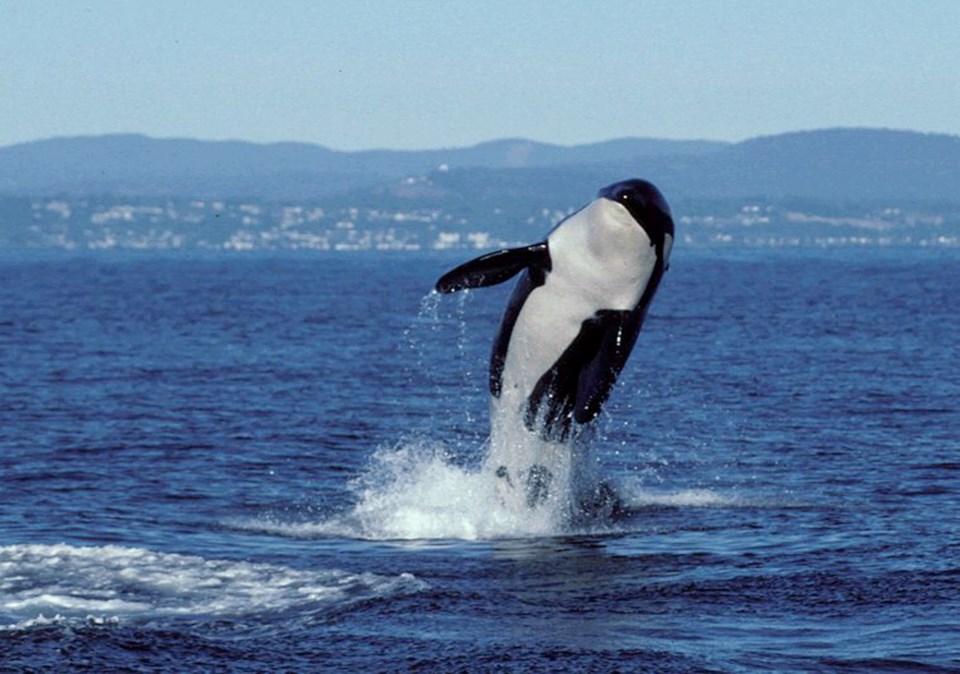One of the oldest matriarchs of the endangered southern resident killer whales is believed to be dead, leaving questions about who will lead J-pod in her place.
J2 or, “Granny,” was last seen in October, the Center for Whale Research says.
Her presumed death brings the total number of southern resident killer whales down to 78.
“She was quite frequently the whale in front of everyone else, leading the group,” said Deborah Giles, research director at the Center for Whale Research.
“I’ve been getting emails from friends saying, ‘Oh my god, who’s going to lead the whales? Who will lead J-pod now?’ My guess is as good as yours. We don’t really have many older females now.”
While J2’s age has been estimated as old as 100, incomplete research suggests she might have been much younger.
Brad Hanson, a wildlife biologist for the National Oceanic and Atmospheric Administration, said a fellow researcher had developed an accurate technique for assessing killer whales’ age based on biopsy data of the whale’s skin and natural chemicals. But budget cuts meant the research was not completed for J2.
“She could have been 100, but it was probably pretty unlikely. It was more likely that she was somewhere in her late 60s to early 80s,” Hanson said.
Although she had a non-descript saddle patch, like many of the J-pod members, J2 was easy to spot because of a half-moon nick on her dorsal fin.
She had a tendency to breach, throwing her body out of the water, which made her a favourite for whale watchers.
If she had any calves, they were born before researchers started documenting the pod, Giles said. Another whale, J1, was once believed to be her son, but researchers now believe he was not.
Still, she was a matriarch, leading the pod.
In 2007, when Giles had been studying the southern residents on her own research boat, she said members of the pod would occasionally peel off from the group.
“J2 would just stop at one point and start banging her tail on the water and suddenly all the others who had tried to go off to the right would come back,” Giles said. “It was almost like calling the troops.”
Matriarchs play an important role in finding food in times of scarcity, which makes her death a significant one, even if it’s not a surprise, Giles said.
Scarce salmon meant the pods in 2016 spread out instead of forming superpods, which is typically celebrated for the possibility of interbreeding.
“This year and in 2013, the salmon in the Salish Sea bound for the Fraser River were just abysmal in numbers. So the pods split up,” she said.
Orca watchers celebrated a “baby boom” in the southern resident killer whale population between December 2014 and January 2016, during which eight calves were born. But the pods may have been better off without those births, Giles said, which put strains on the mothers and have meant food is spread thin.
J2’s death marks the seventh death for the endangered species in 2016. There have also been two calf deaths, two breeding-age female deaths, two adult male deaths.
Not counted are three stillborn calves.
Giles said new threats, like Kinder Morgan’s Trans Mountain pipeline expansion project, have prompted the Center for Whale Research to move beyond its traditional role strictly as scientists. It is developing an outreach and education branch, as a voice for the orcas, she said.
Beyond the risk of a catastrophic diluted bitumen spill, she said noise from tanker traffic will interfere with the orcas’ ability to find scarce food sources.
“They’re a national treasure, for both of our countries,” she said. “I just feel that we are not looking far enough into the future. So many decisions on both sides of the border are being made for short-term gain.”
Victoria-based Raincoast Conservation Foundation has launched a lawsuit challenging federal approval for Trans Mountain, alongside Vancouver’s Ecojustice and the Living Oceans Society, based in Sointula. The organizations argue that the federal cabinet broke the law by not adequately considering harm to the endangered species and their critical habitat.



